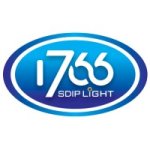A digital addressable, pixel mappable LED pixel string light combines the flexibility of string lights with the programmability and color changing ability of individually addressable LED pixels. Similar to conventional (analog) LED string lights, these lights are arranged in a linear string. However, conventional string lights have limited controllability. Control is typically limited to simple on/off functionality and string-wide adjustments. All LEDs in the string display the same color and intensity simultaneously. In contrast, LED pixel string lights incorporate individually controllable LED nodes and can display different colors and different brightnesses on multiple LED nodes simultaneously.
LED pixel strings are inherently invented to create dynamic lighting effects. Leveraging addressable LED technology, the entire string can be programmed to produce various combinations of color changing effects, animations, and patterns. This is essential for events, displays, and decorative lighting where dynamic visuals are desired. LED pixel strings often come with features such as pixel mapping and color mixing. Individually addressable LED pixel strings often use RGB LEDs. Each channel (red, green, and blue) of the RGB LED can be individually addressed, allowing for unique control over the intensity of each primary color. Color mixing of RGB channels create secondary colors within the defined color gamut. Pixel mapping ensures coordinated and synchronized visual effects across the string and groups of pixel strings. Pixel mapping and color mixing go hand in hand in addressable LED lighting, allowing for the creation of dynamic and visually engaging illumination.
LED pixel string lights are typically made up of a flexible strip of LED pixel nodes that are encapsulated or housed in a protective material, such as epoxy or silicone, to protect them from environmental factors. The string is usually made of a flexible and durable material such as PVC or rubber which provides the flexibility for the string light to conform to various shapes and be easily arranged for decorative purposes. LED pixel string lights come in various lengths. The pixel density, or the number of LED pixel nodes per unit length, can vary based on the application. Each LED pixel is connected with wiring that allows control signal and power to pass from one pixel to the next. These lights typically operate on low voltage for safety. Common voltages include 5V or 12V.
The LED pixel nodes can take various forms to suit different applications and aesthetic preferences. Globe or spherical bulbs are a common choice for LED pixel string lights. Some LED pixel strings feature have a cylindrical or conical design, resembling a bullet or capsule. Miniature LED bulbs are often used in compact string lights. LED pixel string lights are available in festive shapes such as stars or snowflakes. LED pixel lights can also come in various geometric shapes, such as squares, hexagons, or triangles. These shapes allow for creative and artistic lighting installations. The selection of node forms for LED pixel string lights depends the overall design aesthetic, the intended use of the lights, and the atmosphere you want to create.
The type of individually addressable LEDs used on pixel string lights varies according to factors such as compatibility with controllers, refresh rates, power requirements, and the overall complexity of the lighting project. Some popular types are WS2812 (Neopixel), WS2813, WS2801, APA102 (DotStar), SK6812, PL9823, APA104, TM1804, UCS1903, and LPD8806. DIY projects often use addressable LEDs that run on one-wire communication protocols. WS2812B, WS2815, SK9822, and SK6812 use one-wire protocols. They can be daisy-chained using a single data line. SPI (Serial Peripheral Interface), used by LEDs like APA102 and SK9822, is the communication protocol often found in applications that require higher refresh rates and precise control over color and brightness, SPI (Serial Peripheral Interface). LED pixel string lights come with controllers that allow users to customize the lighting effects and sequences. Arduino microcontrollers and Raspberry Pi boards are commonly used to control LED pixel string lights. DMX (Digital Multiplex) controllers are used in larger installations. ESP8266/ESP32-based controllers offer WiFi connectivity for remote control. Bluetooth controllers allow for wireless control via smartphone apps.
The flexibility, programmability, and vibrant lighting effects of LED pixel strings make them a popular choice in various contexts. These lights are often used to enhance the festive atmosphere. They can be wrapped around trees, draped along walls, or hung from ceilings for a playful touch. They can be used to enhance architectural features by outlining building facades, windows, or other architectural elements. LED pixel string lights are used in events, concerts, and stage productions to enhance the visual experience. Incorporating interactive features into LED pixel strings, such as synchronizing with music or responding to sound, can add an extra layer of engagement and interactivity.








